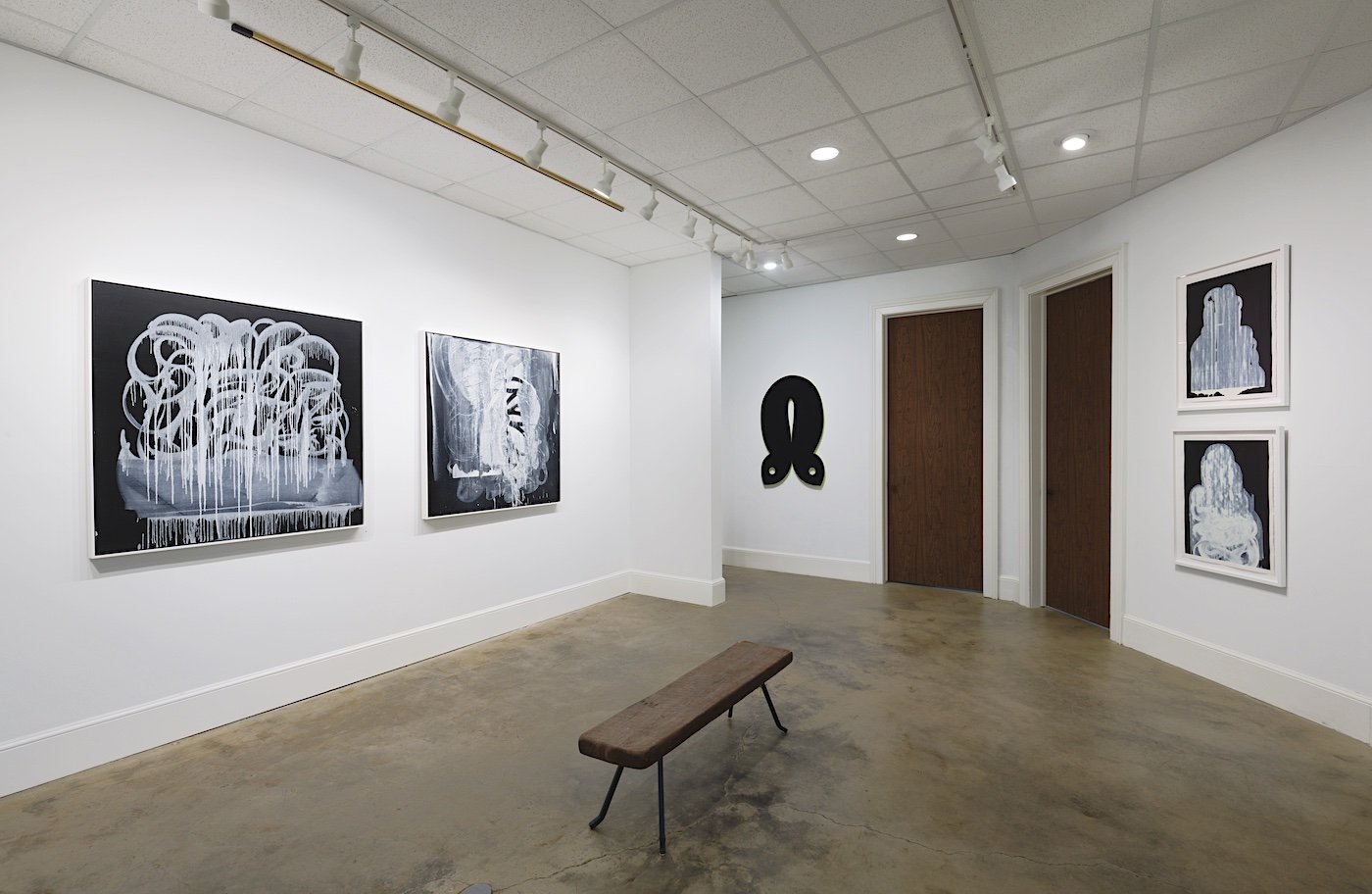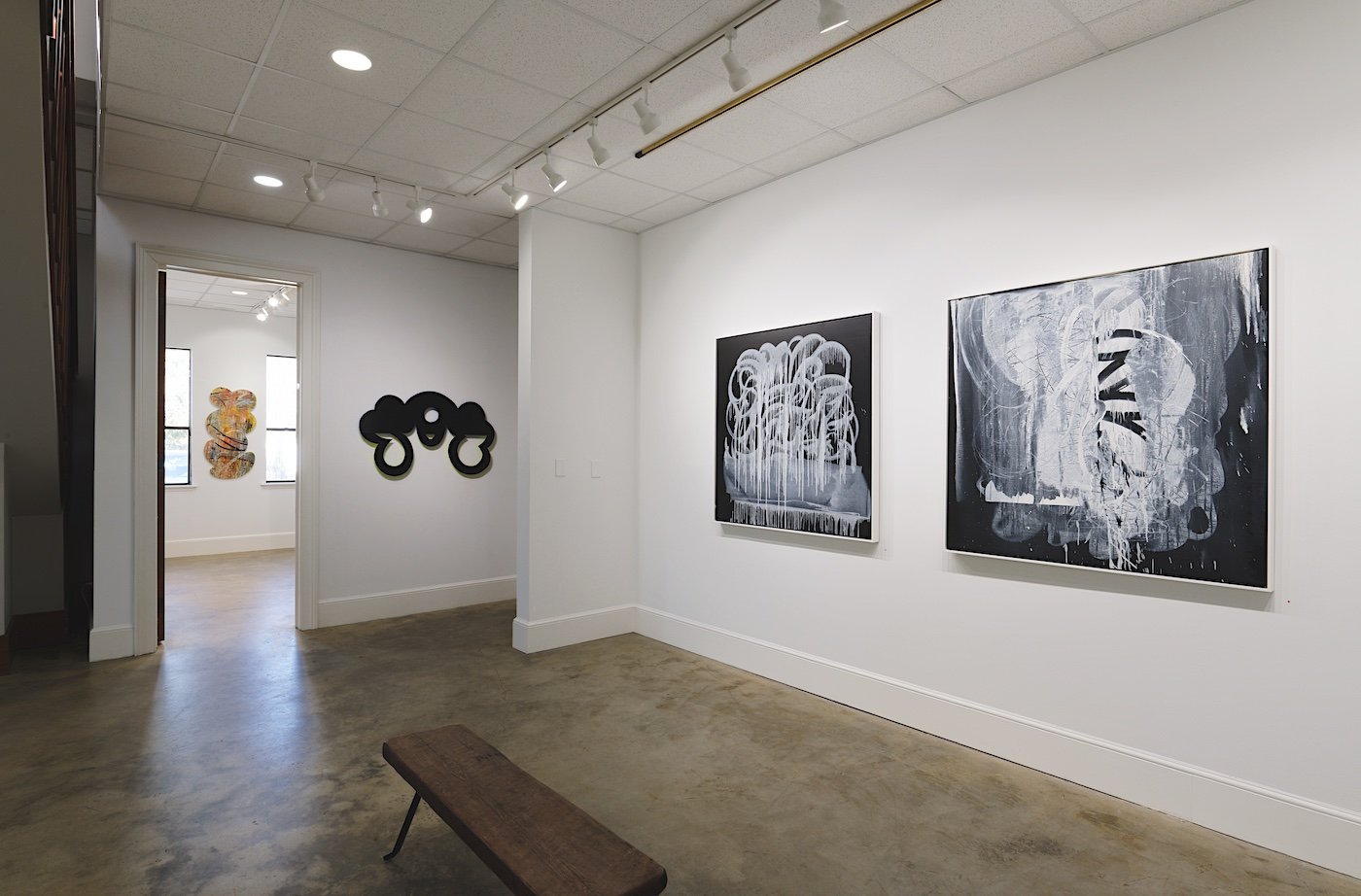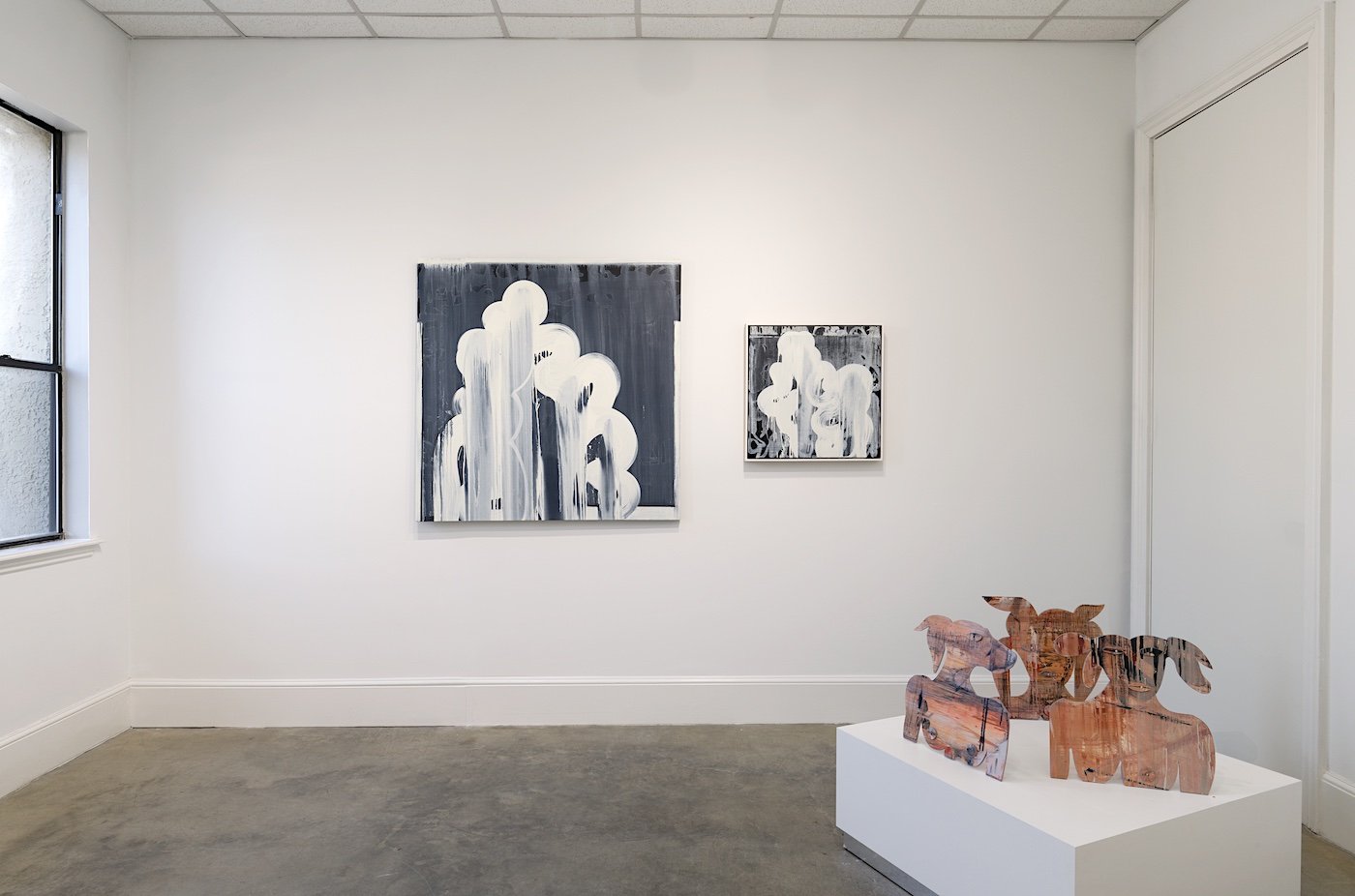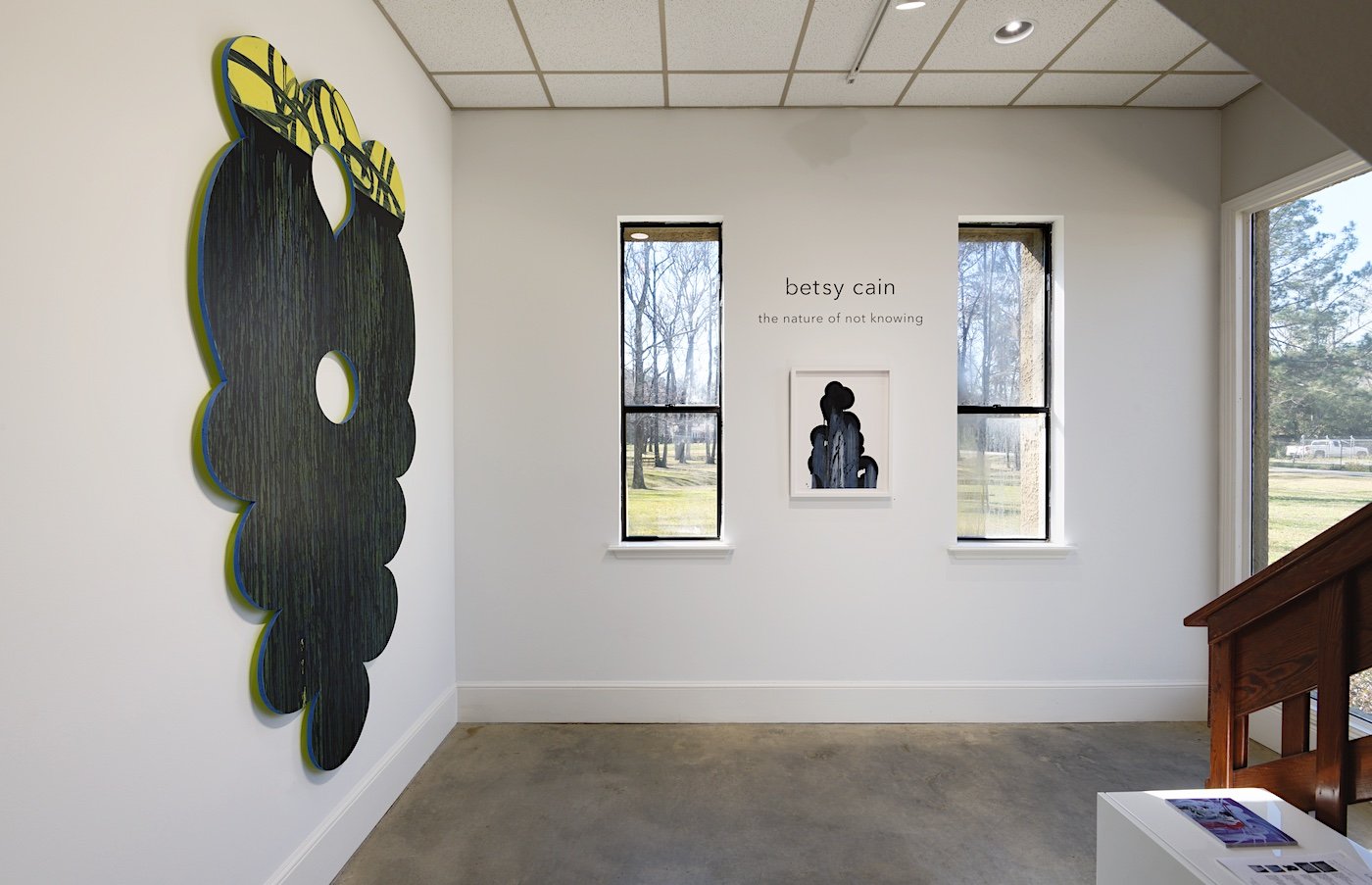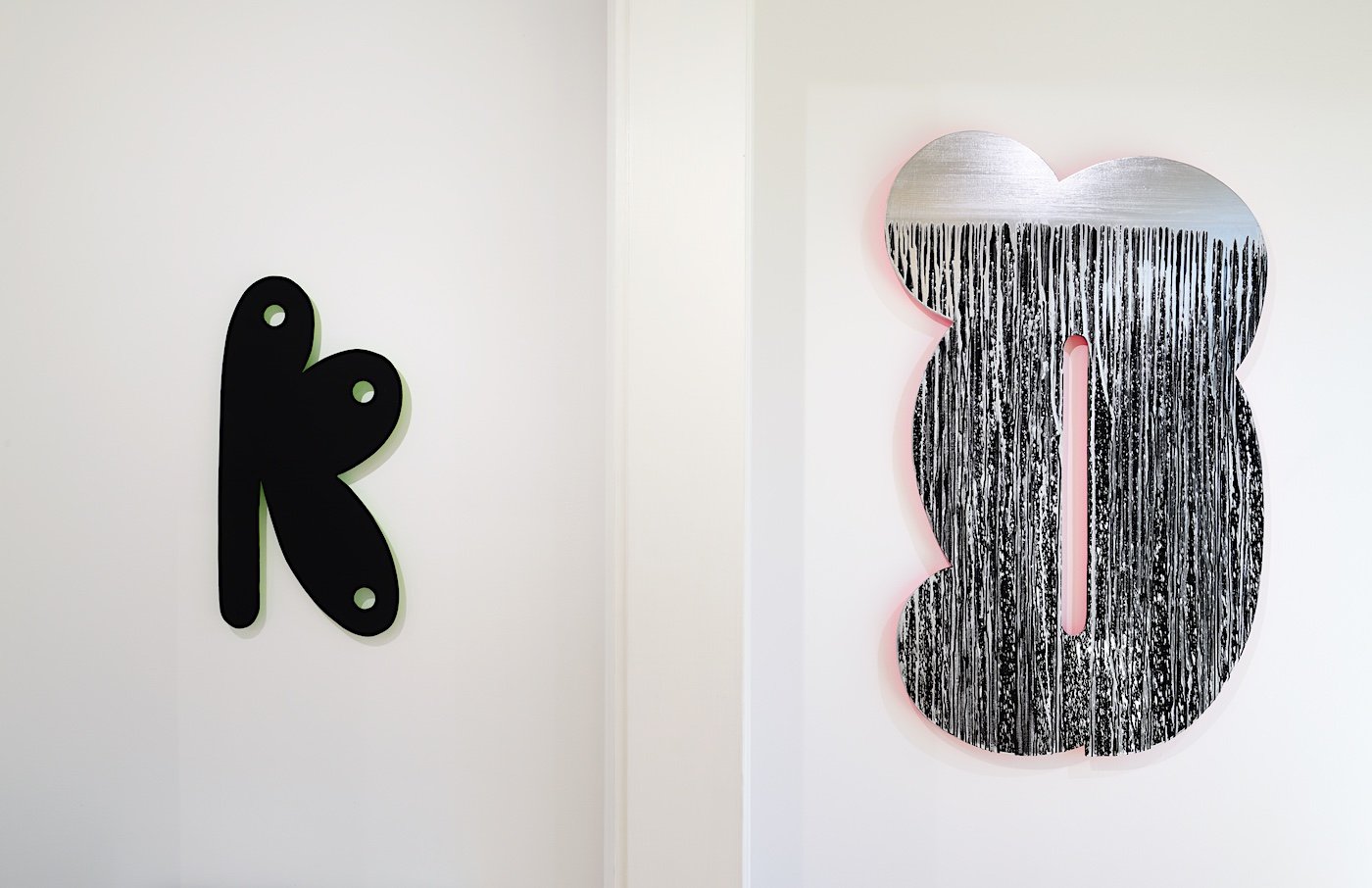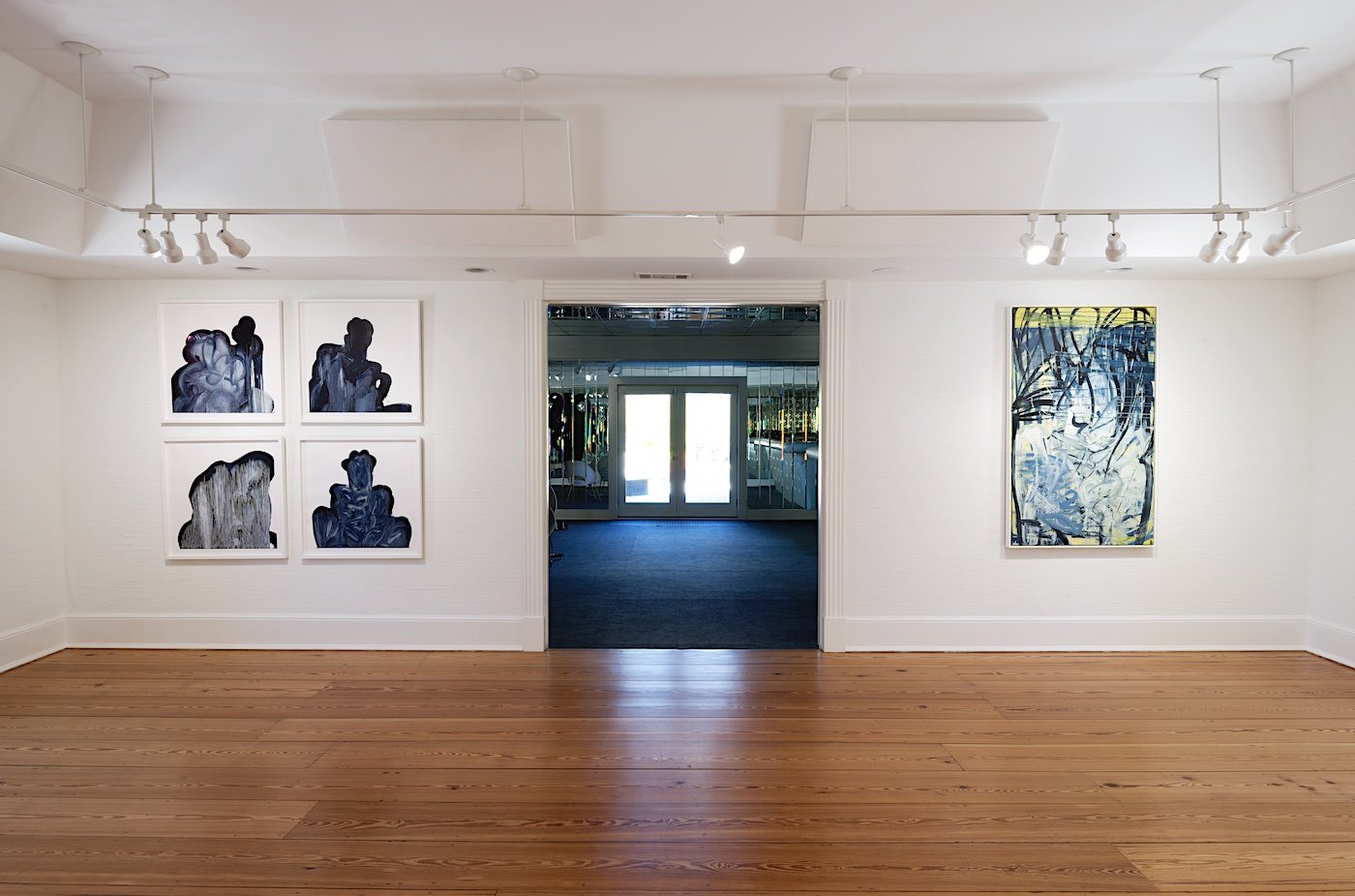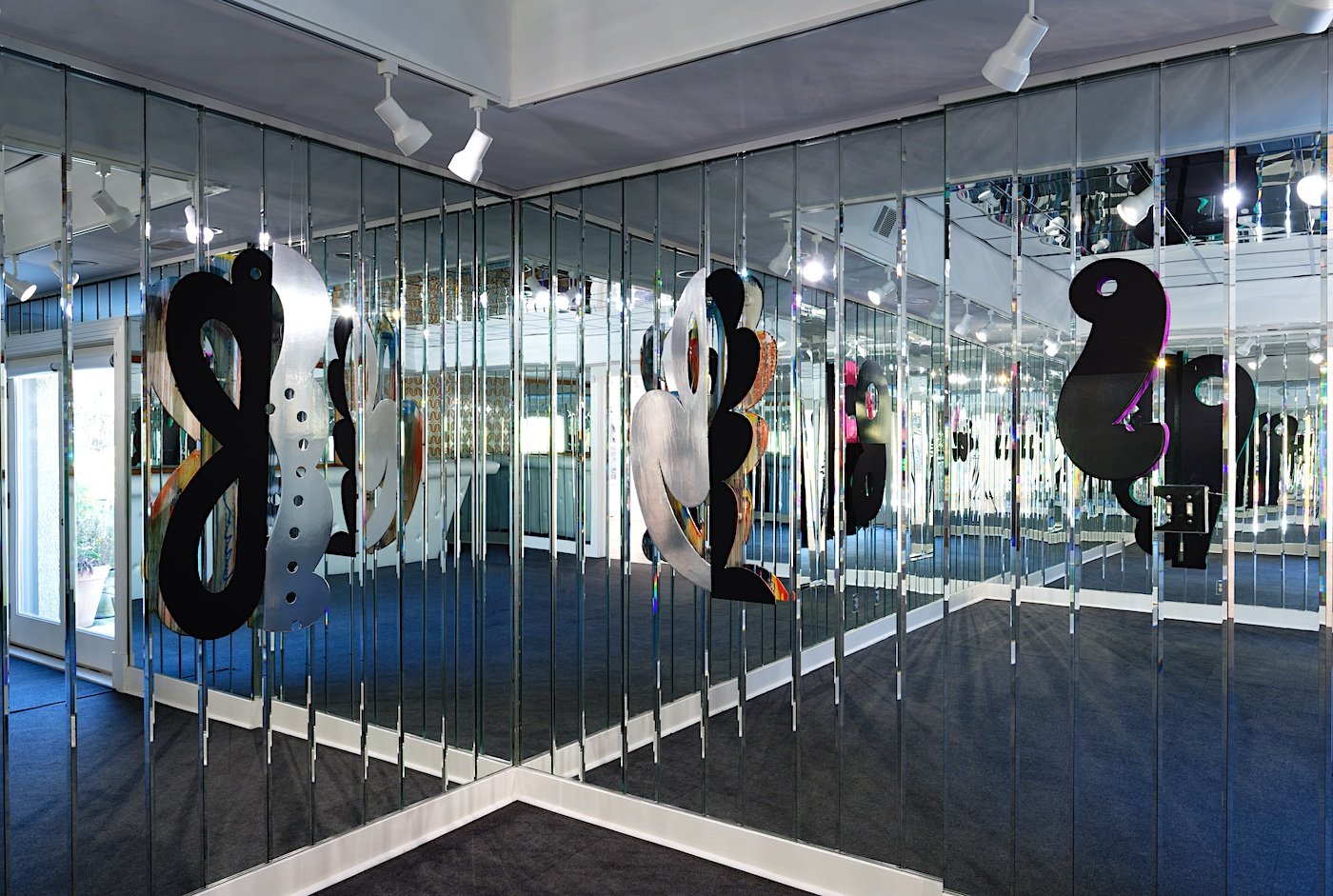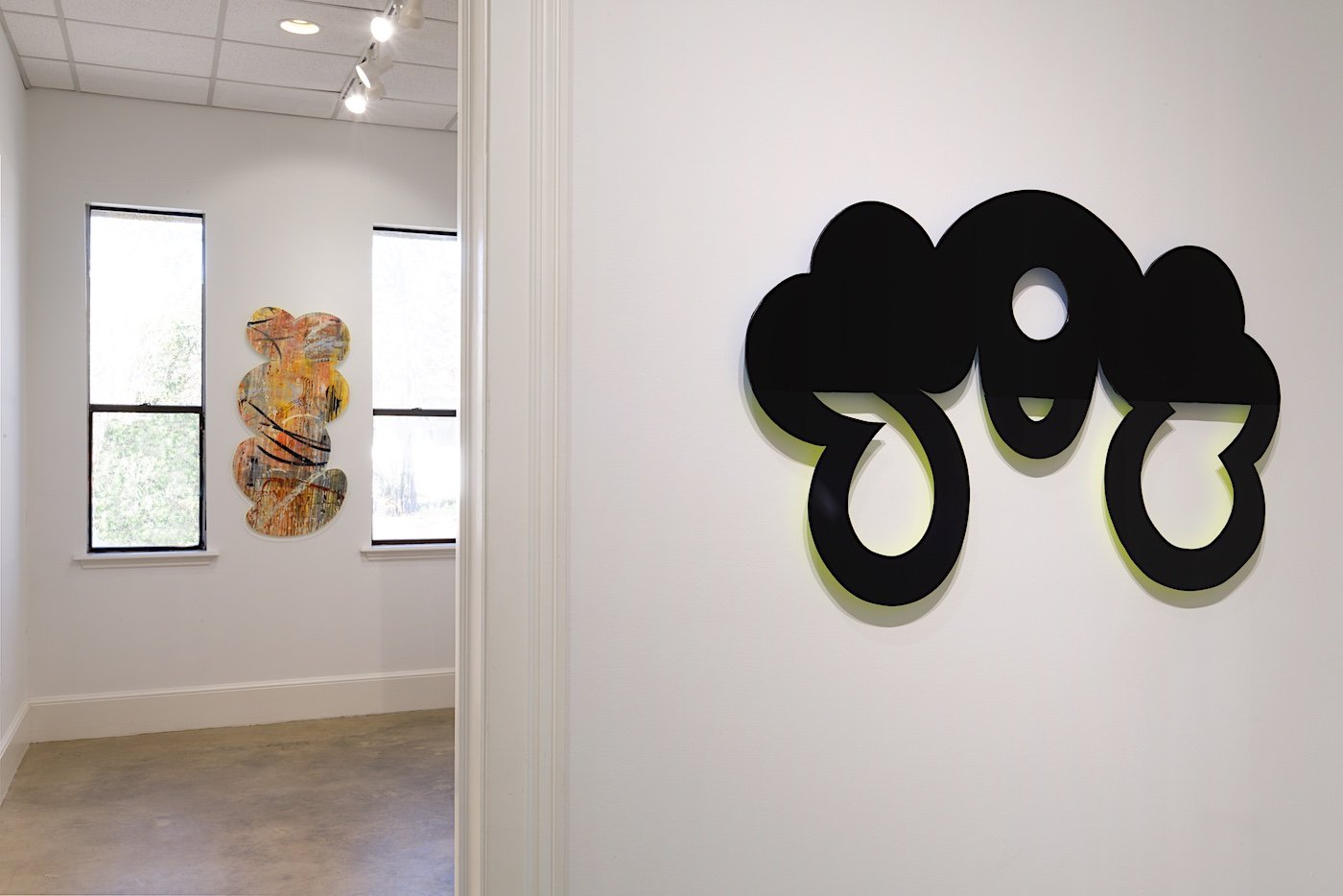BETSY CAIN
the nature of not knowing
purple, please, 2021, oil on canvas, 60 x 60 in
Exhibition Details:
January 7 - March 19
Reception: Friday, Febraury 4th, 2022 6-9 PM
Laney Contemporary is pleased to start the year 2022 with a solo exhibition by Savannah-based artist Betsy Cain. The exhibition entitled the nature of not knowing starts as a way to explore new forms and ideas, a mapping of possibility. Cain’s lines are responsive and her processes move fluidly from one medium to the next. Her dance-like, calligraphic line work on the picture plane is a spatial record of movement. Two and three-dimensional works intertwine and inform one another in this large and innovative selection, an aggregate of concentrated responses to solitary time, reflection, the subtlety of colors, and the way that all of these elements are grounded in nature and experience.
Cain refers to her process as “meditated cutting.” To interrupt patterning, and to highlight or remove elements and use them to new effect, she cuts with jigsaws and wood-carving tools. Bodies and plants are referential as curves, lines, and forms. Medium and color remain in her work as essential as form. Cain’s indigo paintings fluidly move between bodily cut-out relief forms, silhouetted in soft purples, and oil paintings on yupo paper that recall an entanglement of threads. In deep water gods #3 tactile lines both rain down and climb upward accumulating into a cloth-like, dripping, woven composition of blues. Her respect for indigo, its laborious ancient process connected to Gullah Geechee history in the region, stems from her years of loving attention to nearby Ossabaw Island. Inspired by deep waters and open skies, the unusual warmth of the blues Cain paints leads us to the textile roots of indigo and its Low Country history: “I like the fact that a pigment can be associated with a place, with this place.”
Her work also responds to site in the large-scale, black, cut-out installation in the exhibition that playfully collaborates with the mirrored gallery space, multiplying linework and complicating it, reflecting and refracting the light. The blackest black as “deep space” in these works reflects no light, almost consuming it, and drawing connections with the body as light and dark reference the tradition of the silhouette, a pre-photographic method to record the body. Not in likeness but in suggestion, the silhouette in Cain’s work remains akin to carving. As she notes, the brush also “carves” form. She considers the silhouette as linked to our peripheral vision which is a combination of external and internal vision. “It’s a whole awareness that we don’t plug into or notice very often.” Cain’s work is ever-expanding into a growing awareness of the external, a vision of how line is connected to tidal time and tidal light, to nature as texture, and to the density and character of rivers, land, marsh, beach, and ocean. This sense of place and not needing to know it all, but to maintain a sense of wonder, inspires Cain to invent new processes, linked to past and presence, and always rooted in raw passion.
